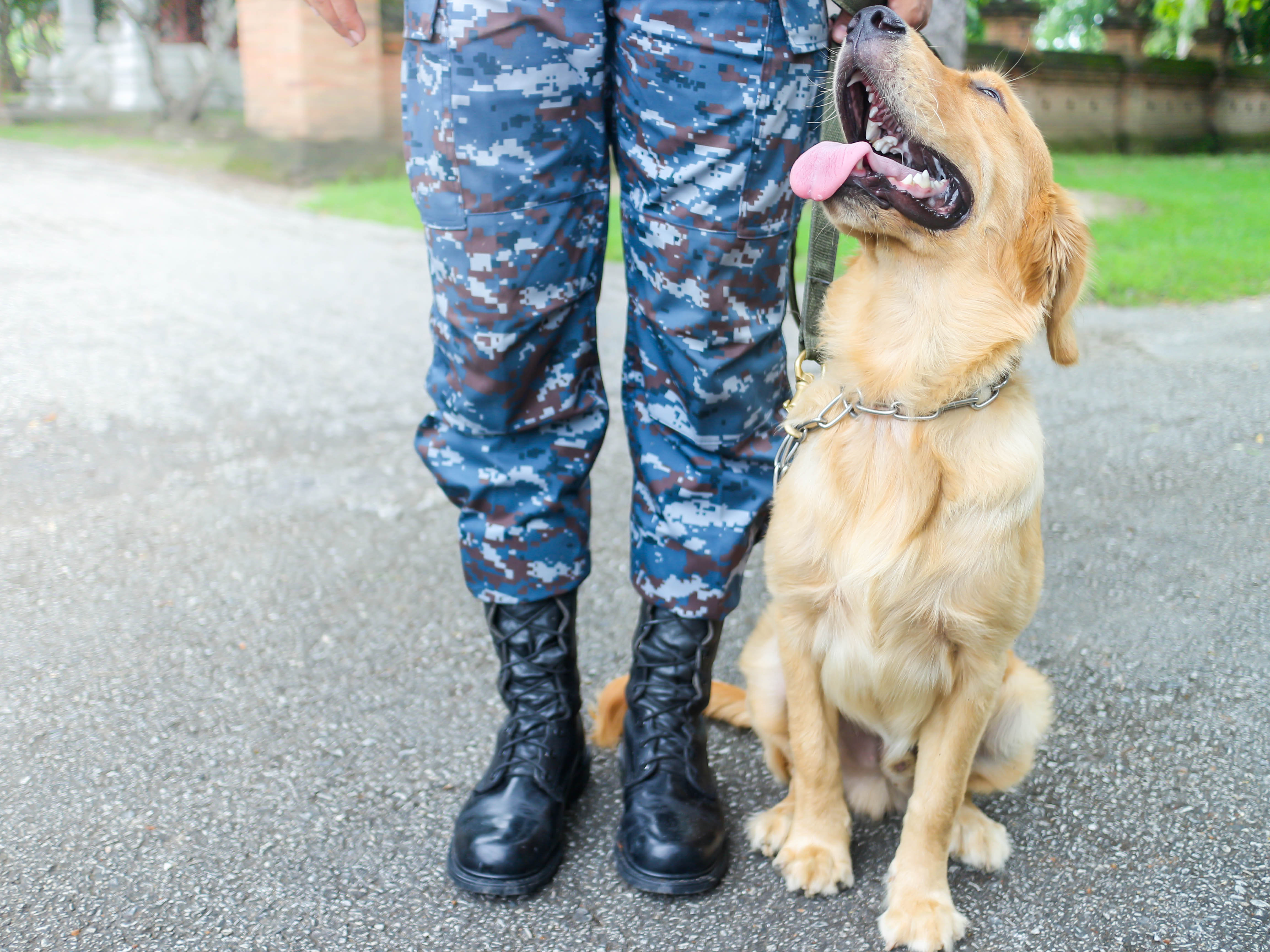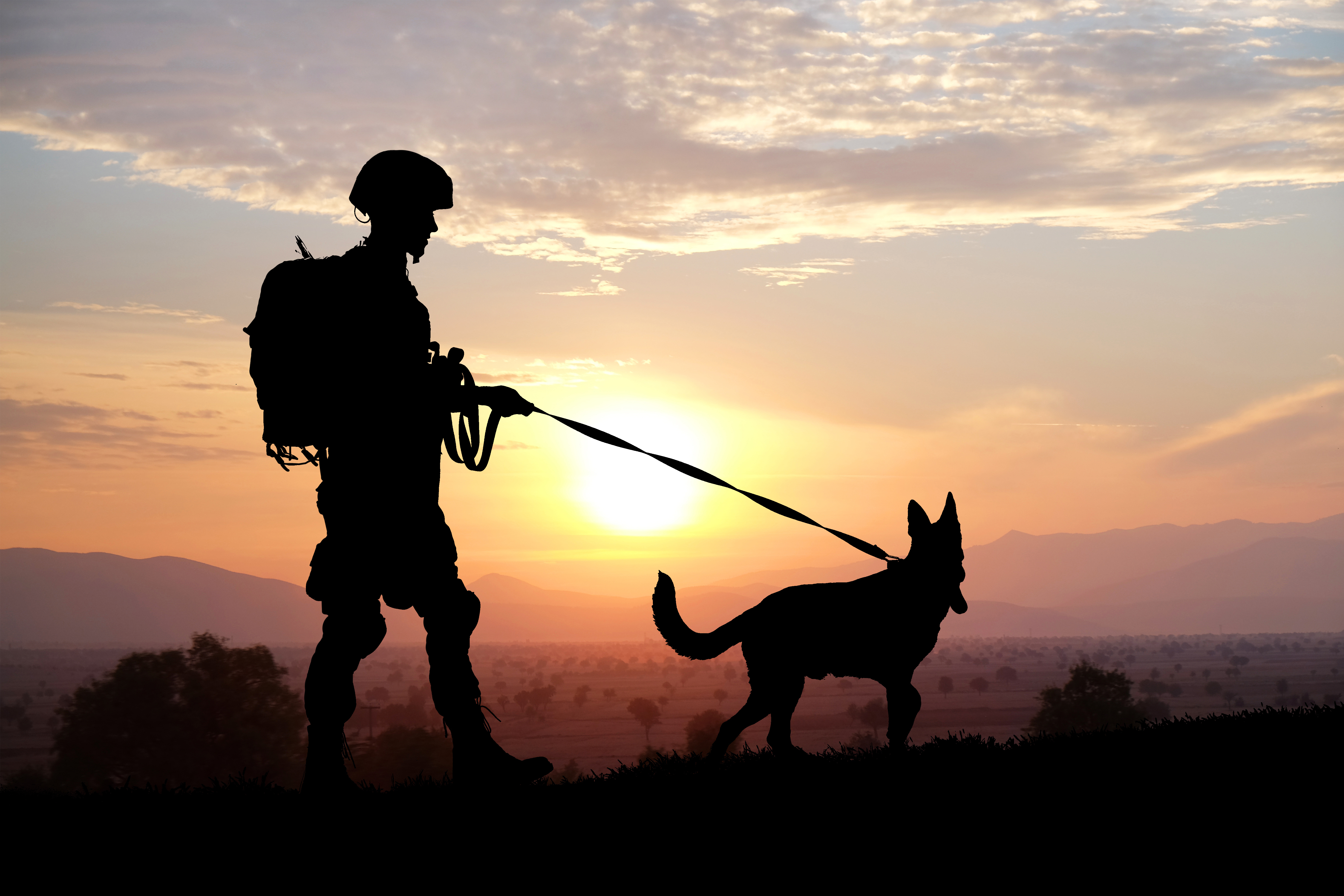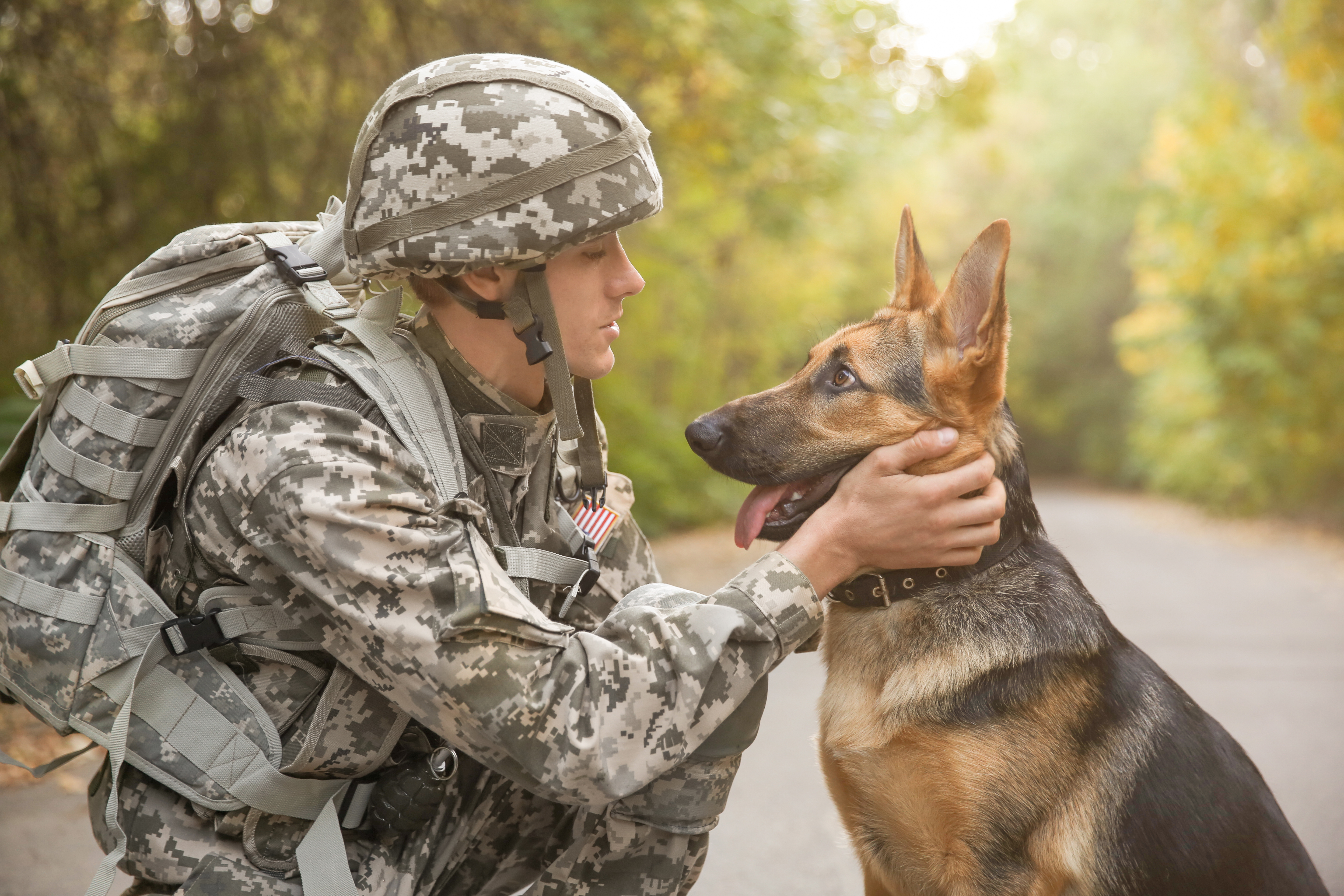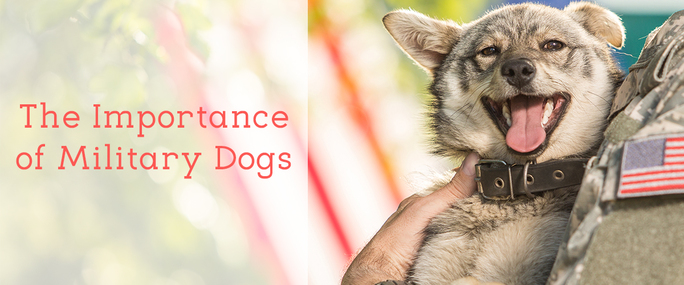Everyone in the United States military plays an important role in protecting our freedom – and that includes dogs. Military dogs serve alongside their human handler to detect and track things like weapons and bombs. We all owe a big thanks to them for keeping us safe, too.

We spoke with Marjorie Tharp, American Humane’s National Director of Communications, to shed some light on why military dogs are so valuable. American Humane has served with the U.S. military for a century now, beginning with an animal rescue program.
Nowadays, the American Humane Lois Pope LIFE Center for Military Affairs exits to protect America’s hard-working military dogs and provide lifesaving service dogs to veterans suffering from Post-Traumatic Stress.
Spoiler: Military dogs’ heroic contributions to our country are beyond impressive.
First things first, tell us about the diverse roles of military working dogs.
The U.S. military has utilized canines since the Civil War. They continued to perform essential roles during World War I, World War II, and the Vietnam War, serving as messengers, sniffing out the enemy, and leading patrols. It is estimated that the U.S. military employed nearly 2,500 dogs during the height of the wars in Afghanistan and Iraq.
Today, these dogs continue to be a vital asset to our military, performing lifesaving tasks such as patrol duties, suspect apprehension, and explosives detection.
Can any dog become a military working dog? What does that process look like?
Many of the dogs are trained through the 341st Training Squadron at Lackland Air Force Base in Texas. Dogs trained here are then dispersed to the U.S. Air Force, Army, Marines, and Navy. The most common breeds are German Shepherd, Belgian Malinois, and Dutch Shepherd. These dogs are typically bred in Europe and procured based on a behavioral test instrument. Once a dog is selected for the program, they undergo training and certification where they may be patrol-certified, detection-certified, or dual certified.
Military personnel interested in becoming dog handlers must complete specialized training. A military dog will likely work with several handlers throughout his/her career.
What unique traits make the duties of dogs so valuable to the military?
Military working dogs are the best defense the military has for detecting Improvised Explosive Devices (IEDs) thanks to their keen sense of smell, which can detect the smallest whiffs – just two parts per billion – of an explosive in the air. How? Dogs have more than 40 times the receptors in their nasal cavities than humans do. To put that in perspective, a dog could smell a single drop of soda in 20 Olympic-size swimming pools. Every military working dog that detects IEDs is helping safeguard the lives of their fellow troops.

A type of scent detection dog was introduced in 2005 within the Department of Defense inventory to augment the existing Explosive Detector Dogs (EDDs). Due to the increase in the number of homemade or improvised explosive devices (IEDs), Specialized Search Dogs (SSDs) are now able to detect both conventional and homemade arms and explosives. These dogs primarily work off-leash and under voice command of their handlers.
Scent detection military dogs hone their skills by performing searches of explosives in areas such as vehicles, barracks, and aircraft.
In addition to obedience skills, dogs that perform patrol duties excel in agility (jumping, walking on catwalks, going through tunnels), controlled aggression (pursue, release on command), and searching for humans.
Are service dogs for veterans military dogs, too?
A veteran is retired from the military service, so a service dog helping him or her is not considered part of the military, but they are a working dog and play a critical role. They can help veterans cope with post-traumatic stress and traumatic brain injury. Dogs can be trained to perform countless tasks to help, including retrieving medication, grounding handlers during stressful episodes, aiding with memory-related tasks, and waking veterans during nightmares.
American Humane, through its Pups4PatriotsTM program, helps train qualified dogs in need of forever homes and pairs them with a veteran in need, for free.
American Humane works to bring back retired military dogs and reunite them with their former handlers; how does this benefit both dogs and soldiers?
Reuniting a dog with one of their former handlers when they retire keeps those bonds alive and enriches both of their lives.
Unfortunately, military working dogs don't always have an easy time returning to their brothers and sisters in arms once they're retired from service. Sometimes they can spend long periods waiting on bases far away from the handlers who want to adopt them. That's even after the 2016 National Defense Authorization Act, in which Congress required that military working dogs be returned to U.S. soil once they retire, and that they be first made available to their former handlers for adoption.

To ensure that all our heroes come home, American Humane has been working to bring back retired military dogs and reunite them with their former handlers. We help raise funds to pay for these heroes’ transport home, where the once-inseparable pair can be reunited and enjoy the peace and freedom
they earned. Four-legged soldiers often form incredible bonds with their human counterparts.
How can citizens like us help protect America’s hard-working military dogs?
American Humane is the country’s first national humane organization, founded in 1877. It is committed to ensuring the safety, welfare and wellbeing of animals. We are first to serve wherever animals need rescue, shelter, protection, or security.
Click here to learn more about American Humane’s military program and consider a donation to support it and all of our lifesaving programs.
Want to learn about our country’s Hero Dogs? Check out American Humane Association’s Working Dogs: Building Humane Communities with Man’s Best Friend.






